Carl E. Olson's Blog, page 90
June 26, 2014
The Real Scandal Behind the Tuam Home for Unwed Mothers
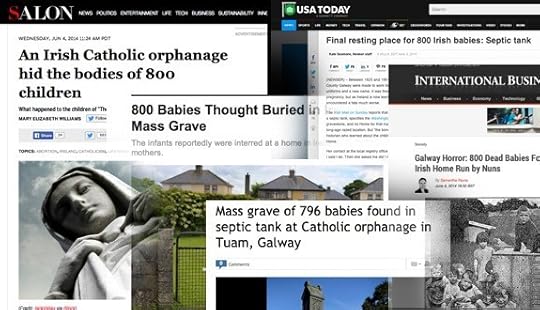
The Real Scandal Behind the Tuam Home for Unwed Mothers | Michael Kelly | CWR
While the media rushed to exaggeration, misinformation, and fabrication, the real societal ills behind the deaths of 800 Irish children were largely overlooked.
For a month now, sections of the Irish and international media have been convulsed by reports of shockingly high mortality rates at a state-funded, Church-run mother and baby home in the west of Ireland. It has been difficult to separate fact from fiction and too few commentators have sought to get to the bottom of the story, with many instead choosing to focus on salacious exaggerations, misinformation, and untruths.
Yes, there was a shockingly high infant mortality rate in the Tuam mother and baby home run by the Bon Secours congregation of nuns. Between 1925 and 1961, 976 infants died. Many of the children, it appears, were buried at an unmarked grave, which was lovingly tended by local Catholic families for decades. Now, the tragic deaths of so many youngsters should be devastating enough in itself to warrant further investigation. But some media commentators and seasoned campaigners immediately sought to exaggerate the story in the most appalling fashion. The children were soon forgotten in the dash to hang their deaths as a crime around the neck of Catholic Ireland.
In media reports, the common grave soon became a “mass grave” and then a “septic tank.” The nuns were accused of “dumping” the children in the grave, and there have been suggestions that police should open up a criminal investigation into the deaths despite absolutely no evidence that any of the tragic deaths were in untoward circumstances. The government has promised a Commission of Inquiry to look at the issue. However, some are wary that the terms of reference may be set so narrowly as to include only Catholic-run institutions, leaving out so-called “county homes” where many unmarried mothers lived with their newborn babies. Former residents of a Protestant-run home in Dublin have also complained that their plight has been ignored.
The world’s media soon arrived, inevitably adding more heat than light. A Washington Times headline screamed, “Catholic Church Tossed 800 Irish Orphans into Septic Tank”; Salon’s stated: “An Irish Catholic Orphanage Hid the Bodies of 800 Children.” More fuel was added to the fire by Father Brian D’arcy, a liberal priest and darling of the Irish media, who likened the nuns’ behavior to that of the Nazis during the Holocaust.
So quick has been the rush to judgment that an eminent media outlet has been forced to roll back on earlier versions of the story. The Associated Press has issued a correction to earlier stories which included claims that were demonstrably untrue. In a response issued at the weekend, the AP admitted that:
June 25, 2014
New: "The Book of Job: Ignatius Catholic Study Bible"
Now available from Ignatius Press:
The Book of Job: Ignatius Catholic Study Bible: Commentary, Notes, & Study Questions
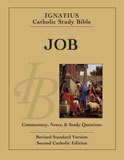
by Scott Hahn and Curtis Mitch
The 18th volume in the popular Bible study series leads readers through a penetrating study of the Book of Job using the biblical text itself and the Church's own guidelines for understanding the Bible.
Ample notes accompany each page, providing fresh insights by renowned Bible teachers Scott Hahn and Curtis Mitch, as well as time-tested interpretations from the Fathers of the Church. They provide rich historical, cultural, geographical or theological information pertinent to the Old Testament book - information that bridges the distance between the biblical world and our own.
It also includes Topical Essays, Word Studies and Charts. The Topical Essays explore the major themes of Job , often relating them to the teachings of the Church. The Word Studies explain the background to important Bible terms, while the Charts summarize crucial biblical information "at a glance".
Scott Hahn, Ph.D., well-known as the author of several best-selling books including Rome Sweet Home and The Lamb's Supper, is a professor of scripture at the Franciscan University of Steubenville, and a very popular scripture scholar and speaker.
Curtis Mitch, a former student of Scott Hahn, is the General Editor of the complete Ignatius Study Bible series.
PRAISE FOR the Ignatius Catholic Study Bible:
"With copious historical and theological notes, incisive commentary and tools for study, the Ignatius Catholic Study Bible is outstanding for private devotion, personal study and Bible study groups. It is excellent for evangelization and apologetics as well!"
-- Stephen Ray, Host ,The Footprints of God series
"The Ignatius Study Bible is a triumph of both piety and scholarship, in the best Catholic tradition: simply the most useful succinct commentary that any Christian or other interested person could hope for."
-- Erasmo Leiva, Author, Fire of Mercy, Heart of the Word
June 24, 2014
"St. John the Baptist, Forerunner" by Frank Sheed

St. John the Baptist, Forerunner | Frank Sheed | From To Know Christ Jesus | Ignatius Insight
All four evangelists begin Jesus' entry into public life with John the Baptist's emergence from his desert. Matthew leaps straight to John's mission after the return of the Holy Family from Egypt, Luke after the finding of the boy in the Temple. The other two actually begin their Gospel with it, nothing of our Lord's earthly life being told before, apart from John's "The Word became flesh and dwelt among us."
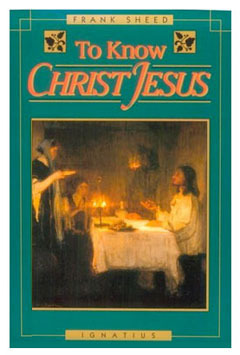 It is clear, then, that John the Baptist's mission was essential: Jesus' own mission needed it. In his Gospel, St. John interrupts his breathtaking Prologue about the Incarnation of the Word (which we Catholics read as the Last Gospel at Mass) to say: "There was a man sent from God, whose name was John. This man came for a witness, to give testimony of the light, that all men might believe through him." So that the Light of the World, the Light which of all lights could surely not be hid, needed someone to give testimony to him, needed John to give testimony to him!
It is clear, then, that John the Baptist's mission was essential: Jesus' own mission needed it. In his Gospel, St. John interrupts his breathtaking Prologue about the Incarnation of the Word (which we Catholics read as the Last Gospel at Mass) to say: "There was a man sent from God, whose name was John. This man came for a witness, to give testimony of the light, that all men might believe through him." So that the Light of the World, the Light which of all lights could surely not be hid, needed someone to give testimony to him, needed John to give testimony to him!
Little is said in the New Testament to show why John's work was thus essential. Our Lord praises him indeed: "Amongst those that are born of women there is not a greater prophet than John the Baptist" (Luke vii.28): and he was not lavish of praise; pause a moment and try to think of anyone else he praised. But although Jesus says (you will find it in the verse before) that John was to prepare his way, it is hard to find any hint from him as to why any preparation at all was necessary for a mission as powerful in word and as studded with miracles as his. We are not shown in the Gospels mighty things flowing from John's work into Christ's. And in the rest of the New Testament nothing much is made of St. John's mission either. St. Paul never refers to it at all, though he must have known about it, since the only description we have of John's origin is given by Paul's companion and disciple, Luke.
Thanks to Luke, all the same, the Church has been intensely aware of John ever since. He is one of that small and immeasurably select band to whom we say the Confiteor at every Mass and daily in our own prayers. Great saints have been named after him—St. John Baptist de la Salle, for instance, who founded the Brothers of the Christian Schools in the seventeenth century; St. John Baptist de Rossi, the eighteenth-century saint whose own instincts were rather like those of his namesake; in the nineteenth century the Cure of Ars, Jean-Marie-Baptiste Vianaey, who would have loved a desert but was never allowed by God to go to one. The number of not spectacularly saintiy persons. who bear his name is, of course, beyond counting—the great French writer of comedy, Moliere, for instance, was Jean-Baptiste Poquelin.
But all that this means is that the parents of the saints, to say nothing of the parents of the dramatist and of the unnumbered others, had a great devotion to the son of Zachary and Elizabeth, not that they had any clear understanding of why it was essential that Our Lord should have him for a Forerunner, or why be should have anybody for a Forerunner. What herald could he possibly need? Their devotion was almost certainly not to the prophet without whom Christ's mission would have lacked an essential element: it was to the child whose birth had been foretold by Gabriel, the child who had leapt in his mother's womb at the sound of Mary's voice as she entered the house of his parents with the Second Person of the Blessed Trinity in her womb: it was to the man who had paid with his head for telling the truth about Salome's mother.
From John's circumcision until the day he began his great mission in preparation for Christ's greater mission, there is a gap of thirty years, and only two phrases to tell us anything about them. The first: "The child grew and was strengthened in spirit"—probably the spirit here is the Holy Spirit: the whole phrase is at once like, and not quite like, what is said of Our Lord in verse 40 of Luke's second chapter. The second: "And he was in the desert until the day of his manifestation to Israel."
Zachary and Elizabeth were both old when John was born. The general view of commentators is that they died when John was young, and that it was as a child he chose the desert rather than the priesthood to which, as his father's son, he was entitled. The whole Jewish priesthood had been a mighty thing, but a foreshadowing only. Now that the Reality it foreshadowed was itself in the world, John had a duty mightier still.
To the south of Jerusalem one finds two areas of rock and chasm, one running westward, the other eastward towards the Dead Sea, where to this day a man could live in almost total solitude. Here, probably, John the Baptist made his long novitiate. It has been suggested that he spent part of the time with the Essenes, as Josephus was to do in his late teens. They were a rigorous, ascetical sect. If he did, his teaching is in reaction against theirs.
But we have no detail of his desert life, save what he ate and what he wore. He wore a garment whose shape, if it had any shape, is not told us: it was made of camel's skin—the nomads used the same material for making tents. Round his waist was a strip of leather. He ate, so Matthew and Mark tell us, locusts and wild honey: the locust is a flying insect about two inches long: the Bedouins still eat them, dried in the sun and salted to taste. What he ate and what he wore must have mattered very little to John: it was not merely asceticism that took him into the desert, he could have been ascetical at home. Solitude was what he wanted, the solitude in which the strong soul called to it reaches maturity most surely.
Did the Devil bother him? John's strange, improbable conception—of a mother past her menopause and an elderly priest—was a nine-days' wonder in and about the Temple. Satan could not have failed to know of it. The child was worth watching. And then there were the long years in the desert. There was, of course, no descent of a dove upon John, no voice from heaven: but these things had never happened to anyone, and Satan had no means of knowing that they were the sign of signs. We know that the Pharisees would later be asking themselves, and ultimately asking John, if he were the Messias. Satan could hardly have avoided wondering too.
Related Ignatius Insight Book Excerpts:
• The Incarnation | Frank Sheed
• The Problem of Life's Purpose | Frank Sheed
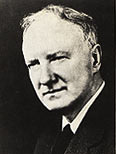 Frank Sheed (1897-1981) was an Australian of Irish descent. A law student, he graduated from Sydney University in Arts and Law, then moved in 1926, with his wife Maisie Ward, to London. There they founded the well-known Catholic publishing house of Sheed & Ward in 1926, which published some of the finest Catholic literature of the first half of the twentieth century.
Frank Sheed (1897-1981) was an Australian of Irish descent. A law student, he graduated from Sydney University in Arts and Law, then moved in 1926, with his wife Maisie Ward, to London. There they founded the well-known Catholic publishing house of Sheed & Ward in 1926, which published some of the finest Catholic literature of the first half of the twentieth century.
Known for his sharp mind and clarity of expression, Sheed became one of the most famous Catholic apologists of the century. He was an outstanding street-corner speaker who popularized the Catholic Evidence Guild in both England and America (where he later resided). In 1957 he received a doctorate of Sacred Theology honoris causa authorized by the Sacred Congregation of Seminaries and Universities in Rome.
Although he was a cradle Catholic, Sheed was a central figure in what he called the "Catholic Intellectual Revival," an influential and loosely knit group of converts to the Catholic Faith, including authors such as G.K. Chesterton, Evelyn Waugh, Arnold Lunn, and Ronald Knox.
Sheed wrote several books, the best known being Theology and Sanity, A Map of Life, Theology for Beginners and To Know Christ Jesus. He and Maise also compiled the Catholic Evidence Training Outlines, which included his notes for training outdoor speakers and apologists and is still a valuable tool for Catholic apologists and catechists (and is available through the Catholic Evidence Guild).
For more about Sheed, visit his IgnatiusInsight.com Author Page.
Now available: "The Seven Sorrows of Mary" by Romanus Cessario, O.P.
Available through Ignatius Press:
by Romanus Cessario, O.P.
In this beautiful book of meditations, illustrated with full-color reproductions of Giotto's famous Scrovegni chapel Frescos (c.1305), discover the Seven Sorrows of the Blessed Virgin Mary, and contemplate with her how the mysteries of Christ's life answer the deepest questions of our lives.
A deep contemplation of Christ's passion through the eyes of his Blessed Mother, and a profound and lively reflection on the Seven Sorrows of Mary, this book is an invaluable companion to pray and meditate with during Lent and a beautiful resource you will return to throughout the year. It is also an ideal gift for Catholics and for those who wish to understand the mystery of our own salvation and is well-suited for adult catechetical instruction and RCIA.
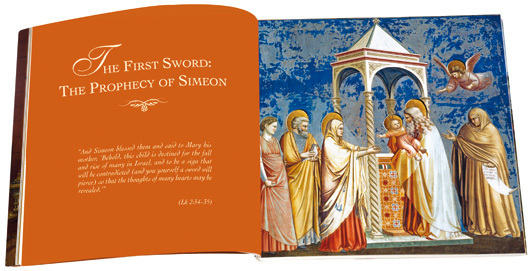
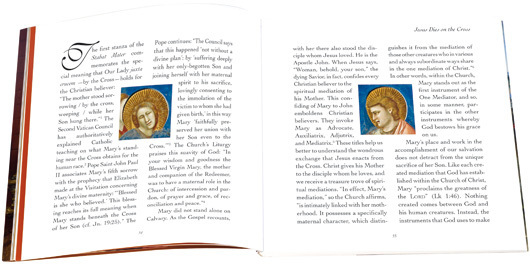
Seeing the Hand of God
A Review of Watcher from the Shore by Ayako Sono | John Herreid | IPNovels.com
Novels often fall into the trap of offering easy redemption. The wayward soul sees the error of his ways, has a quasi-mystical experience, and sets off on the road to the straight and narrow. It’s what we want to happen—even if it sacrifices some of the reality of human behavior in doing so.
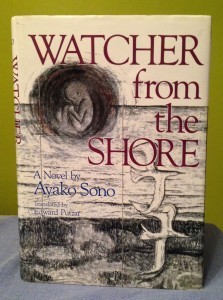 Watcher from the Shore doesn’t offer any of this sort of catharsis. Written by the Japanese Catholic novelist Ayako Sono, it is about as unsentimental a novel as you could imagine. Her novel offers a glimpse into a culture that can appear to be rigid and emotionally repressed to Western eyes. At the same time, the book allows the reader to view Christian morality from the outside, stepping into the shoes of an agnostic gynecologist who sees his participation in abortion as balanced somewhere between moral neutrality and a positive good for society.
Watcher from the Shore doesn’t offer any of this sort of catharsis. Written by the Japanese Catholic novelist Ayako Sono, it is about as unsentimental a novel as you could imagine. Her novel offers a glimpse into a culture that can appear to be rigid and emotionally repressed to Western eyes. At the same time, the book allows the reader to view Christian morality from the outside, stepping into the shoes of an agnostic gynecologist who sees his participation in abortion as balanced somewhere between moral neutrality and a positive good for society.
Sadaharu Nobeji operates his clinic near the shores of the Pacific Ocean. In the not-so-distant past, it was common for people in this part of rural Japan to discard newborn infants if they had birth defects or were otherwise unwanted. Sadaharu tells himself that it’s a good thing that he is now there to offer the more humane alternative of abortion, yet despite his insistence upon a clear conscience he keeps bringing the topic up in conversation with his best friend, a widowed Catholic woman named Yoko Kakei. During a dinner visit, Yoko introduces him to a Catholic priest, Father Munechika.
In his first conversation with Father Munechika, Sadaharu gives one of many of his defenses of performing abortions:
“Let’s suppose I become a Christian. I borrow a cross from the church, without paying, Father, and set it up on the roof of my clinic in place of the lightning rod. My patients arrive, and when they see the cross I will say: ‘Look there! I’m so afraid of God I certainly will not perform abortions.’ Now, Father, I ask you; What will that solve? …I’ll tell you what would happen. They would skip the sermon and go to another clinic for their abortions. That’s all. And though I say it myself, if you will pardon me, I’m clever with my hands and my operations are good. Frankly, it’s better for the patients that I do their operations instead of some other doctor.”
The clinical distance Sadaharu cultivates between himself and objective morality is mirrored in his distance from his wife.
Bring "Mary of Nazareth" to your parish or school and get the DVD before its released to the public
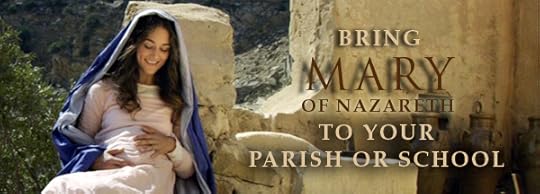
Fresh from an extremely successful sponsored theatrical release and seen by tens of thousands in theaters across North America, the highly acclaimed MARY of NAZARETH , an epic motion picture on the life of the Blessed Mother from her childhood through the Resurrection of Jesus, is now available to be shown in your own church or school!
IGNATIUS PRESS is pleased to announce the MARY of NAZARETH Parish Screening Program.
Now you can bring the life of the Mother of Christ to the “Big Screen” in your own facility to entertain, evangelize, educate, change hearts and even raise funds for your own worthy cause!
Father Donald Calloway MIC, considered one of the foremost experts on the life of Mary, had this to say about the film, “Mary of Nazareth offers the best presentation of Our Lady I have ever seen. Mary of Nazareth is an absolute theological and Mariological masterpiece! It will make you want to love her more than ever. Mary's beauty is pure and ageless; her feminine mystery filled with wonder and virtue, and her divine motherhood is both tender and captivating. Without a doubt, this is the most stunning portrayal of the Virgin Mary on film!”
Packages will include the following:
Site License – allows licensee to show the movie unlimited times at one venue for 12 full months from date of purchase. License cannot be shared with another church, school, individual or organization.
Mary of Nazareth DVDs to sell (MSRP $29.95) or gift. Each DVD case contains two discs – one is the Mary of Nazareth movie in English with Spanish and English subtitles. The exciting contents of the second bonus disc includes an interview with Alissa Jung, who starred as Mary; an interview with Fr. Donald Calloway MIC, author and Marian expert; “behind the scenes” footage; a film photos slide show; segments from Mary: Mother of God , part of the acclaimed “Footprints of God” DVD series; “Pieta” song by M.J. Poirier; and testimonies from the San Francisco premiere of Mary of Nazareth . Plus, there is a 24-page collector’s booklet with study questions included in each case.
Mary product brochures to give out with each DVD.
One additional Mary of Nazareth DVD for screening purposes
13x19 full-color promotional posters with write-in space for event place, date and time
full-color souvenir tickets
1 full-color 24 x 36 souvenir poster
Downloadable event planning guide and other downloads will be available at www.MaryFilm.com
Packages are available in 10-, 25-, 50-, and 100-DVD sets and, for a time until mid-October, license holders will have exclusive sales of the DVDs.
To see a trailer of this film, package contents and prices, endorsements from prominent Catholics and much more, check out the www.MaryFilm.com website.
Bring this incredible movie to your community for the first time or bring it back! Many are asking where they can see it again!
For more information, please go to www.MaryFilm.com or contact Diane Hanson, dhanson@ignatius.com, toll free 866-431—1531 x 5, or direct 734-455-1973.
This program is only available in the United States and Canada.


Share

Tweet

Forward


Copyright © 2014 Ignatius Press, All rights reserved.
The Quran and Christianity

A boy copies Quranic verses in a Muslim school in June in Timbuktu, the northern Mali city that was seized by Islamist fighters in 2012 and then liberated by French and Malian soldiers in early 2013. (CNS photo/Paul Jeffrey)
The Quran and Christianity | Michael Coren | Catholic World Report
Islam's holy book is filled with intolerant, aggressive language that calls directly for violence against Christians.
Islam’s persecution of Christianity has reached a grotesque crescendo in the past few months. Nigeria, Pakistan, Sudan, Egypt—the list goes on and horribly on. There is much that can be said—and I will not refrain from saying it—but if there is to be honest debate and discussion about the issue we have to admit what the Quran, the holy text of Islam, states about Muslim attitudes toward Christians.
In a previous column I briefly mentioned one or two Quranic references to followers of Jesus, but let us go further.
In the Quran, Christians are generally referred to as “people of the book” and then in the various suras and ayahs (or chapters and verses) a number of references are made. In 2:120, “Never will the Jews nor the Christians be pleased with you till you follow their religion. Say: ‘Verily, Islamic Guidance is the only Guidance. And if you were to follow their desires after what you have received of Knowledge, then you would have against Allah neither any protector nor helper.”
In 3:56: “As to those who disbelieve, I will punish them with a severe torment in this world and in the Hereafter, and they will have no helpers." In 3:85: “And whoever seeks a religion other than Islam, it will never be accepted of him, and in the Hereafter he will be one of the losers.” In 3:118: “O you who believe! Take not as your helpers or friends those outside your religion since they will not fail to do their best to corrupt you. They desire to harm you severely. Hatred has already appeared from their mouths, but what their breasts conceal is far worse. Indeed we have made plain to you the verses if you understand.”
3:178 states: “And let not the disbelievers think that our postponing of their punishment is good for them. We postpone the punishment only so that they may increase in sinfulness. And for them is a disgracing torment.” Hardly encouraging for the basis for a peaceful co-existence and a comfortable pluralism.
Sometimes the Quran changes emphasis or flavor, but it must be remembered—and this it vital—that the parts of the book written later supersede and abrogate those composed earlier; not necessarily those that come later in the Quran itself but those written earlier even if listed later in Islam’s holy book. This means that the Quran can be quoted to appear more liberal and progressive than it is intended to be.
Regarding Christianity, however, the approach seems to remain static and constant.
June 23, 2014
"Making Gay Okay" is a "very important" and "searingly effective book"
Matthew J. Franck, Director of the William E. and Carol G. Simon Center on Religion and the Constitution at the Witherspoon Institute, reviews Robert R. Reilly's new book, Making Gay Okay: How Rationalizing Homosexual Behavior Is Changing Everything (Ignatius, 2014; also available as an Electronic Book Download), saying, "This is a very important book, and Ignatius Press should be commended for publishing it." Franck writes:
Among the “LGBT” activists and their allies who have lately been so successful in transforming our culture’s understanding of love, marriage, and sexual integrity, Reilly’s book will be hated and denounced. It is likely that many of those who 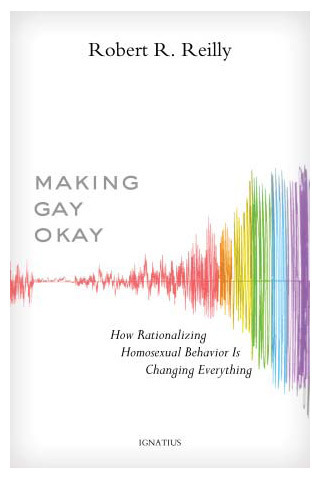 denounce the book most strongly will not actually read it. They will certainly not squarely confront or refute its arguments.
denounce the book most strongly will not actually read it. They will certainly not squarely confront or refute its arguments.
By contrast, among those who feel beleaguered by the culture war over same-sex marriage, who have shrugged and decided to live with the fraud of “marriage equality” in hopes of obtaining some civil peace, Reilly’s book will probably just be ignored. That is unfortunate, because Making Gay Okay is a very powerful account of how LGBT activists have so successfully conquered—or at least subdued—the hearts and minds of such people. It is also unfortunate because LGBT activists will not allow for a civil peace on any terms that friends of a free society can accept.
Here are a few more excerpts from Franck's review:
This is not a book that relies on revelation or scripture in any way. As Reilly notes, it was the ancient Greek philosophers who first came to the insights about nature on which he relies. By contrast, the idea that our nature is malleable, that we can remake ourselves to suit our desires, was ushered in by Rousseau. Only with the dominance of this distinctly modern notion did it become possible for age-old moral strictures on sexual behavior to be burned to the ground and replaced by new strictures of our own making. Only a Rousseauian view that nothing about human nature is fixed could give rise to a culture in which it is possible to redefine marriage to include relationships once considered to be intrinsically immoral. ...
Reilly rightly notes that “it would be wrong to assign the major share of blame” for the legal somersaults of recent years “to the homosexual apologists.” The blame largely belongs to the partisans who gave us the “privacy” jurisprudence of the Supreme Court, which began in Griswold v. Connecticut (1965) by breaking “the first link in the chain connecting sex and diapers” and declaring a right of married couples to use contraception. The progression continued in Eisenstadt v. Baird (1971) and Carey v. Population Services (1977), which declared single adults and minors had the same right. Most horrifyingly, Roe v. Wade (1973) and Planned Parenthood v. Casey (1992) declared and reaffirmed a right to kill the unborn child in the womb. “Abortion,” Reilly remarks, “brings to completion the denial of procreative sex by nullifying its effects, which are seen as accidental.” ...
As Robert Reilly underscores in this searingly effective book, what we face today is a movement to accomplish, on a collective and society-wide basis, what those who embrace morally condemned behavior have always sought to accomplish for themselves as individuals: rationalization that what's wrong is right. If we are to remain true to the cumulative wisdom of our civilization about human nature and the conditions of human flourishing, we must respond as fearlessly as the author of Making Gay Okay and say—it’s not.
Read Franck's entire review on the Public Discourse website.
Fr. Dwight Longenecker, in his recent review of Reilly's book, states:
The best thing about the book is that Reilly explains what’s happening within the gay agenda with an objective, critical stance. He simply reports what’s going on. Just the facts ma’am. The most brilliant thing is that he does so without reference to the Catholic faith, the Bible or any other religious connection. This makes his argument all the stronger for he allows the facts to speak for themselves and never has to pose or get preachy.
You can read the Introduction to Making Gay Okay here on Insight Scoop. Or the Introduction and opening chapter on Ignatius.com as a PDF file. And, finally, here is the video trailer for the book:
"On Learning From Not Having Learned" by Fr. James V. Schall, SJ

(Photo: © stokkete - Fotolia.com)
On Learning From Not Having Learned | Fr. James V. Schall, SJ | Catholic World Report
What I call “another sort of learning” is the finding and reading those seminal books that take us to the truth and order of things
Editor's note: The following was originally given as an address at the Bosque School in Albuquerque, New Mexico, on May 8, 2014.
“It (disappointment) occurs when the boy who has been enchanted by Stories from the Odyssey buckles down to really learning Greek. It comes when lovers have got married and begin the real task of learning to live together. In every department of life it marks the transition from dreaming aspiration to laborious doing.”
— C. S. Lewis, from the second Screwtape Letter, The Screwtape Letters (New York: Macmilllan, 1962), 11.
“No man had a more ardent love of literature, or a higher respect for it than Johnson. His apartment in Pembroke College…was over the Gateway. The enthusiasts for learning will ever contemplate it with veneration. One day, while he was sitting in it quite alone, Dr. Panting, then head of the College…overheard him uttering this soliloquy, in his strong emphatick voice: ‘Well, I have a mind to see what is done in other places of learning. I’ll go and visit universities abroad. I’ll go to France and Italy. I’ll go to Padua—and I’ll mind my business. For an Athenian blockhead is the worst of all blockheads.’”
— From James Boswell’s Life of Johnson, 1730 (London: Oxford, 1931), I, 49-50.
I.
“Bosque” is evidently the Spanish word for a forest. Here in the southwest it refers especially to woods along river bottoms. In this school, the river is the famous Rio Grande. One can speak of being educated in a forest or even, I suppose, of being educated by a forest. Tolkien, who had a special love of trees, used to speak of what the forest taught. Our Scriptural heritage speaks of a “Tree of Knowledge of Good and Evil” with a Garden as the original place of the First Parents. The relation of gardens to parks and forests is an interesting one. I believe that the City of St. Lewis has a large “Forest Park,” as does Everett, Washington.
In one sense today, we must almost say that all of our national forests spread throughout the country are cared for as large scale gardens and parks. In the middle of Munich Germany, is a lovely park called “the English Garden.” We probably have no “forests primeval” left. Even the jungles in Brazil come under governmental control. We go out of our way to prevent development of certain woods and lands. In a way, nature becomes more nature when it comes under the scope of human understanding. Nature was not meant simply to be nature. It was also meant to be understood as nature. The things of nature have their own intelligibility.
A school in a forest setting is designed, in the first place, to be a school, not a forest. This particular school was founded in 1994, so it is a mere twenty years old. Its first graduates are still not nearly into what Cicero called “old age.” The state in which this school is located is not in “Old” but in “New” Mexico. New Mexico entered the Union on January 6, 1912. My father was born in Iowa in 1904. In the beginning, I cited a passage from James Boswell writing in 1730. This was forty-six years before the signing of the Declaration of Independence and one hundred and twenty-seven years after the founding of Jamestown, Virginia in 1607. I taught in a university in Rome founded in 1551. The usual date given for the founding of the City of Rome is 753 B. C. Thus, in terms of Roman dating, this year, 2014 A.D., is listed as Ab Urbe Condita 2767. That is, from the founding of the City of Rome, two thousand seven hundred and sixty-seven years.
I used to insist that students knew, among others, the dates of the deaths of Socrates, Aristotle, Cicero, Augustine, and Aquinas. From the time of Abraham to the time of Socrates was approximately eight hundred years. From the time of Socrates (d. 399 B.C.) to the death of Augustine (d. 430 A.D). was another eight hundred years; from Augustine to Aquinas was eight hundred years (1274 A.D.). From Aquinas to our days is likewise about eight hundred years. These are time sequences and dates that anyone can remember from early youth if he but learns them. They serve to give some time proportion and structure to our history. We also know of ancient Chinese, Hindu, and Inca calendars. The age of the universe itself is said to be around 13.7 billion years. We like to know what went on, where, and involving whom.
Some education in time and space statistics, in history and geography, is appropriate to the young whose memories are still alert. It is good to know the where’s and when’s of things. If we do not take the trouble to know what happened in time and space, we will not be able to place things in relation to each other. Everything will come together as if time and space were collapsed into one blurry time and one fuzzy place. Knowledge of times and places is not the most profound kind of learning. But it provides the context and arena for what are the highest things. Again, I mention this point here as such things are best learned when we are young. We do not waste our time when we know more than our own time and place.
But can we not just look up times and places on our cell phone? No one needs to remember anything. The machine will do it for us. Yet, machines do not know relationships, how the Battle of Hastings in 1066 is related to the Plantagenet House of English monarchs. No machine knows that it knows. Yet, there is too much to remember, no doubt of it. Why not let the machine do it? The machine is a helpful tool to memory, no doubt of it. But if nothing is actually in our heads, we will not see how this relates to that. That is what we have a mind for, to see the connections, the order of things.
And how do we know what we should remember?
June 21, 2014
The new manna, the Eucharist, is supernatural food given for supernatural life

Detail from "Institution of the Eucharist" (1441) by Fra Angelico (www.wikiart.org)
A Scriptural Reflection on the Readings for Sunday, June 22, 2014 | Solemnity of the Most Holy Body and Blood of Christ | Carl E. Olson
Readings:
• Dt 8:2-3, 14b-16a
• Psa 147:12-13, 14-15, 19-20
• 1 Cor 10:16-17
• Jn 6:51-58
In my late teens I began to have questions about the beliefs and practices of the small Fundamentalist Bible chapel—co-founded by my parents—I had attended most of my life. Many of these questions were only half-formed at the time, but later came into sharper focus, causing me to critically rethink much I had been taught.
Why was it, I wondered, I had heard several sermons about Rahab the harlot (Josh 2 and 6), but only one about Mary, the mother of Jesus? Why did we celebrate Easter and the Resurrection of Christ, but ignored Good Friday and the commemoration of his death? And why did we celebrate the Lord’s Supper each Sunday, but always emphasized that our communion service was only “symbolic” in nature?
This latter topic was especially vexing. And it became even more troubling after I attended an Evangelical Bible college for two years. I heard sermons and lectures about the miraculous gift of the manna (Ex 16; Num 11), but I don’t recall ever hearing a sermon or lecture about the final twenty verses of the sixth chapter of John. That passage fascinated and troubled me. I read it again and again, mulling over the stunning words, heard in today’s Gospel reading, uttered by Jesus: “Amen, amen, I say to you, unless you eat the flesh of the Son of Man and drink his blood, you do not have life within you.”
John 6, especially verses 51-71, was the most bothersome passage in the Bible for me as a Protestant. That section of Scripture played an essential role in the decision my wife and I made to become Catholic, entering the Church together in 1997. Yes, there were many other important issues, including Church authority, history, Mary, and the other sacraments. But at the heart of our hunger was a desire for the Most Holy Body and Blood of Jesus Christ.
“For my flesh is true food,” Jesus told his disciples and the others listening to him, “and my blood is true drink.” I became convinced of what the Church taught—and had taught for two thousand years—about the Real Presence: “In the Eucharist Christ gives us the very body which he gave up for us on the cross, the very blood which he ‘poured out for many for the forgiveness of sins.’” (Catechism of the Catholic Church, par 1365).
Four times in John 6 the words “Amen, amen” (or “Truly, truly) are uttered by Jesus (vs 26, 32, 47, 53). Each signifies a transition and a teaching of great importance; each is a deeper revelation into the person and work of Christ. First, Jesus rebuked the people for seeking only after earthly, temporal food—they instead should believe in him (v. 29). Secondly, Jesus emphasized that it is his Father, not Moses, who gave the manna in the desert. Third, Jesus strongly stated that belief in him is eternal life (v. 47) and that he is “the bread of life” (v. 48). He then announced, to the amazement of those present, that the bread he referred to is his flesh. “This is the bread that came down from heaven,” Jesus stated, “Unlike your ancestors who ate and still died, whoever eats this bread will live forever.”
Jesus had fed the people real bread (Jn 6:1-14). He then offered real, eternal life to those who believed in him. And then he offered his real flesh as food and his real blood as drink. Natural food, of course, sustains natural life. And the manna, although given in a miraculous manner, was still natural food for natural life. But the new manna, the Body and Blood of Jesus Christ, is supernatural food given for supernatural life. This new manna, the Eucharist, is “the source and summit of the Christian life” (CCC 1324). It is, as Paul wrote the Corinthians, participation in the blood and body of Christ.
It is, for me, no longer bothersome, but still stunning.
(This "Opening the Word" column originally appeared in the May 25, 2008, issue of Our Sunday Visitor newspaper.)
Carl E. Olson's Blog
- Carl E. Olson's profile
- 20 followers



